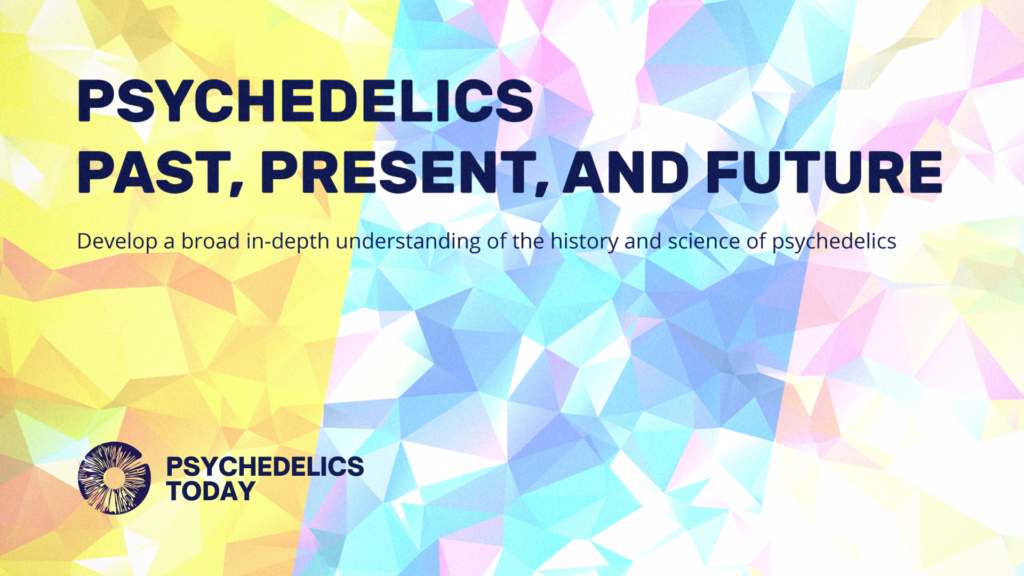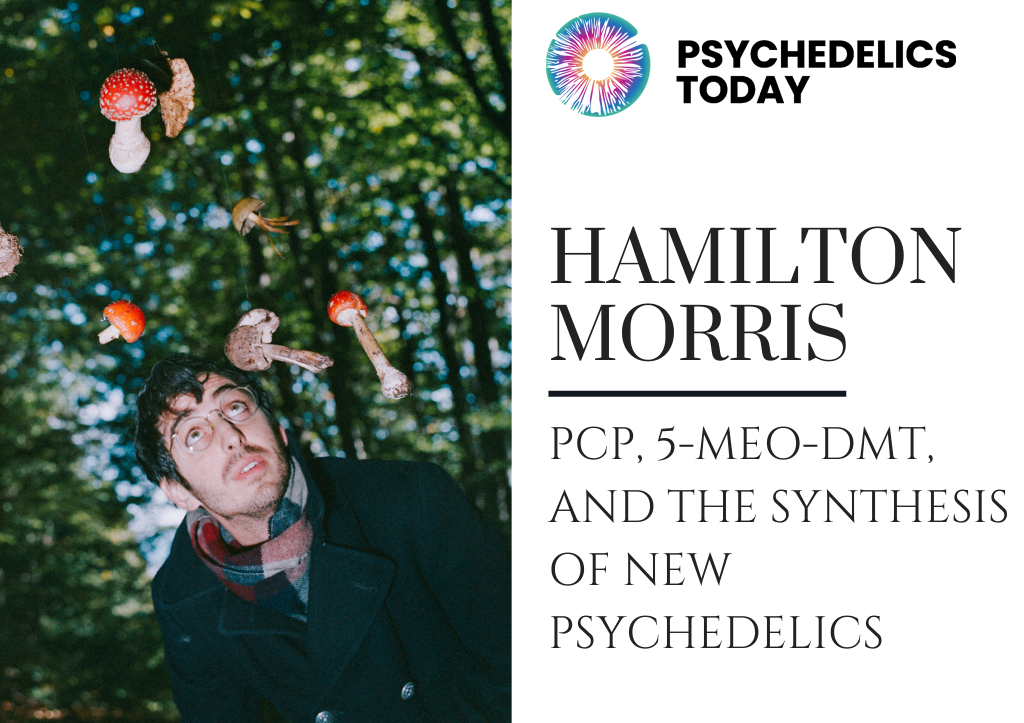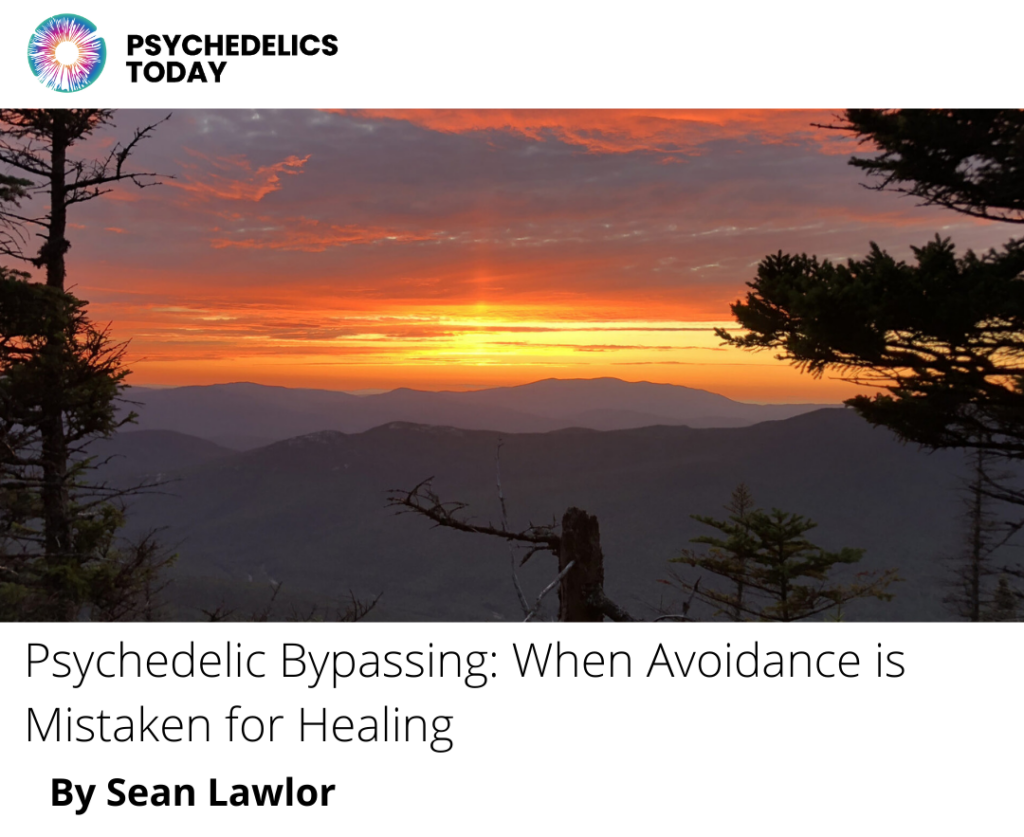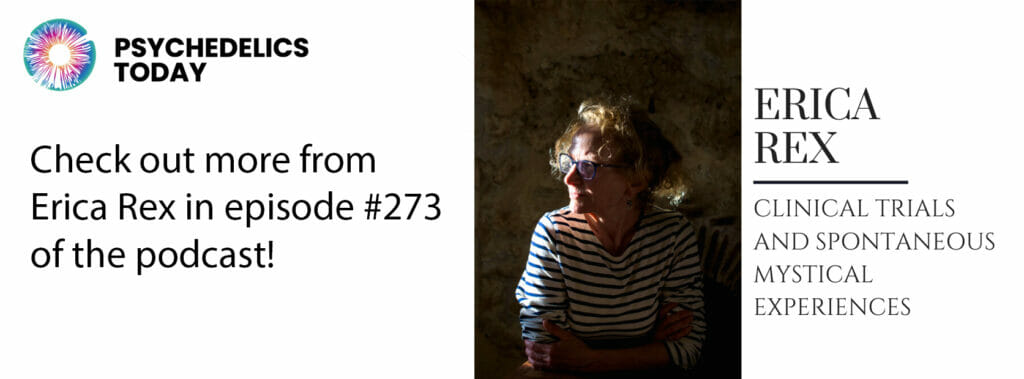The continued exploitation of this fragile species for its DMT encapsulates narcissism itself.
Until recently, the Sonoran desert toad, Incilius alvarius (formerly Bufo alvarius) was not on my wildlife-watch radar. Then an email from the owner of a group of psychedelic retreat centers operating in Latin America, Portugal, and the Netherlands brought the greenish brownish warty native of the Sonoran desert to my attention. He was writing to let me know that the personality disorder of narcissism, the toxic world-killer which has brought life on Earth to an environmental and climatological precipice, could be cured – with psychedelics. Specifically with “Toad Venom.”
“With expert guidance and facilitation, psychedelics can help us… be collectively healthy, happy, and harmonious in the stewardship of our planet,” he wrote.
Curious, I clicked on a link for a “Transformational Bufo Alvarius Retreat (5-MeO-DMT, Toad Venom).” According to the ad, “5-MeO-DMT, also known as the sacred toad medicine, is a beautiful teacher that can lead to profound transformation when facilitated by experienced guides,” and they would be offering dimethyltryptamine (DMT) in its 5-MeO-DMT – toad form – as the chemically mediated gateway to this process.
As something of an expert in identifying displays of cognitive dissonance, the suggestion that exploiting a toad in the interest of curing Homo sapiens of his most reprehensible trait was not sneaking past my cognitive threshold.
Toads, Poaching, and Indigenous Use
I love amphibians. I always have. When I lived in Kenya as a teenager, the red legged Hyperolius viridiflavus flashed from reed to reed in the dam below the house; on a trip to Madagascar, I observed the tomato frog, Dyscophys antongilii, sequestered in a storm drain in a village; near my former home in the Sierra Nevadas, the mountain yellow-legged frog, Rana muscosa chirped in mountain lakes every spring.
Worldwide, amphibians are the most threatened class of vertebrates on the planet. Although thought to be abundant in its home range of the Mexican state of Sonora and parts of Arizona, the Sonoran desert toad is on endangered species lists in both California and New Mexico. In Arizona, a fishing license grants collection of up to ten live Sonoran toads. Shipping them to another state or abroad is illegal and prosecutable, as is possession of the psychedelic 5-MeO-DMT.
Prohibition against toad possession has not stopped poachers though. In Arizona, poachers were caught on camera dumping toads into plastic bags in a wildlife conservation area.
Increased toad poaching and illegal transport across state borders and the US-Mexico border has recently triggered the Lacey Act, which prohibits import, export, sale, acquisition or purchase of fish, wildlife or plants transported, or sold in violation of US, Indian or international law. Law enforcement agents for the US Fish and Wildlife Service (USFWS) confirmed they are currently carrying out an investigation. Whether their efforts are successful in reducing illegal trade remains to be seen.

DMT is a trace neurotransmitter found in mammalian lungs and brains, as well as in numerous plant species. The DMT molecule was first synthesized in a lab in 1931 by Canadian chemist, Richard Manske. Its natural occurrence in plants was not confirmed in Western science until microbiologist Oswaldo Gonçalves de Lima did a biochemical study of Mimosa hostilis in 1946 after observing the Indigenous Pancuro Tacarutu (Brazil) ceremonially drinking an intoxicating brew* called vinho da jurema distilled from the plant’s root bark. In 1956, Hungarian chemist and psychiatrist, Stephen Szara extracted DMT from Mimosa hostilis, gave himself an intramuscular injection of it, and experienced a “psychotic effect to the serotonin metabolism.”
The now discredited hypothesis that Indigenous groups used a hallucinogenic compound derived from toads was put forth by anthropologist Dr. Jeannette Runquist, and reported in a 1981 issue of Omni Magazine. She described decapitated toad skeletons buried near excavations of ancient Cherokee encampments in North Carolina, and wrongly inferred that what was, in fact, food waste as the telltale sign of Indigenous mysticism.
“Food trash was taken for psychedelic magic,” said Robert Villa, Research Associate, Tumamoc Desert Laboratory, Tucson, Arizona, and President of the Tucson Herpetological Society. “Toads were skinned and eaten as survival food, as part of the ordinary diet.”
Despite claims on the part of modern healers, there is no evidence in the archeological record of toads being used ceremonially by Indigenous groups in the Americas.
“For such a significant smoke, there would have to be some record of it,” said Mr. Villa. “Even though Indigenous cultures can be good at hiding things from outside inquisition, this is too significant to go unnoticed,” he said. “The significance of the toad in Indigenous culture isn’t what people want to believe,” said Mr. Villa. One of his goals is “to stop the appropriation of Indigenous culture around the Sonoran desert toad. All of the archeological leads are dead ends.” Using the abundant depictions of toads in Mesoamerican culture to bolster the specious claim that the toads were used in psychedelic rituals represents cultural hijacking.

For ancient cultures, the life cycle of the Sonoran toad embodied rebirth and renewal. Its seasonal appearance – they spend ten months of the year underground, emerging briefly in July and August during the rainy season to mate and reproduce – as well as its complex life cycle, which involves metamorphosis from a water-dwelling, gill-breathing, fish-like tadpole to land-dwelling, four-legged adult toad adds to its supernatural aura.
“They were thought to interact with gods of the underworld,” said Mr. Villa. In Sonora, locals avoid them as toxic. Among the Indigenous groups in northern Mexico, their appearance is associated with the arrival of seasonal rains. Disturbing them is an accursed act which can disrupt weather patterns. “You could incur damages from the gods in the form of drought or flooding if you harass a toad,” he said.
The evidence, according to Mr. Villa and other scientists who have explored the natural history of Incilius alvarius, indicates extracting and smoking toad-derived 5-MeO-DMT is a post-industrial phenomenon. It has nothing to do with cultural tradition. In recent years, however, “smoking toad” has become the new psychedelic fad, making Incilius alvarius the latest must-have in the growing list of psychedelic consumables. And in response to increasing demand from the tourism and retreat industries, one Mexican coastal group whose members have subsisted on tourism – mostly selling ironwood carvings to foreigners – have begun peddling Sonoran toad medicine to foreigners.
“The Seri, or Comcaac [an Indigenous group living on the mainland coast of the Gulf of California] adopted toad magic and medicine as a tourism item. They’re trying to make a living by facilitating people smoking this stuff. It’s not part of their history,” said Mr. Villa.
There is hearsay evidence, according to Mr. Villa, that regional cartels have begun exploiting this practice as well, as further means to extort locals in the interest of serving what is becoming a global trade.

Bufo alvarius: the Psychedelic Toad of the Sonoran Desert
The entry of toad medicine into modern psychedelia is itself a twisted tale. Back in 1981, the Omni article piqued the interest of one reclusive resident of Denton, Texas, named Ken Nelson. While studying at the University of North Texas, Mr. Nelson commenced an earnest inquiry into toad skin secretions. He came across the work of the Italian toxicologist Dr. Vittorio Erspamer, whose most important contribution to neuroscience was the identification and synthesis of the neurotransmitter, serotonin. As a toxicologist, Dr. Erspamer was most interested in the exudate from amphibian parotid glands as a possible source of new medical drugs. His chemical analysis of the venom from 40 toad species serendipitously yielded the finding Nelson had hoped for: one species, Incilius alvarius synthesized a DMT-containing substance. Mr. Nelson documented his discovery and techniques for extracting, drying and smoking 5-MeO-DMT in his 1984 pamphlet: “Bufo alvarius: the Psychedelic Toad of the Sonoran Desert,” which he published privately under the pseudonym, Albert Most.**

Unwittingly, Mr. Nelson opened a Pandora’s box. Since then, a fabricated sacred mysticism has evolved around Incilius alvarius and the DMT squeezed from its glands. Despite the explicit wishes of Mr. Nelson, an ardent conservationist, who towards the end of his life expressed concerns about the ecological repercussions from misrepresentation of his work, use of 5-MeO-DMT has skyrocketed in recent years. Even though DMT can be fabricated in a lab with legal, commercially available chemical precursors, many practitioners – such as the retreat proprietor – adhere to a new age belief that there is something mystically special about DMT extracted from live toads.
I questioned the proprietor of the psychedelic retreat about the authenticity of his claims about 5-MeO-DMT. Why could he not use the lab-formulated version? Endangering the life of a wild animal in order to cure narcissism did not jive with his stated intentions. This fat little toad about the size of my hand was the embodiment of nature itself; and yet he as a Caucasian, self-styled psychedelic healer was exploiting it as a commodity. The toad had no say in its own destiny.
The proprietor responded by invoking an unknowable mystical consciousness with which he and his associates – the people responsible for collecting toad venom – were imbued. “We know what we are doing is for the good of humankind, in keeping with the sacred spirit of those who have preceded [us] in this practice,” he said. Those who collect the toad, he said, are performing a consecrated task. One of his practitioners, a Swedish man who guides DMT sessions at his retreats, described collection and use of the toad as a sacrament: “I only order [5-MeO-DMT] through sources I know,” he said. “It’s energy medicine, so the energy has to be right.” The source, he said, was a Mexican friend who has tribal connections and harvests the medicine directly. He would never use toads gathered the way he’d seen in videos – en masse and thrown in garbage bags.
“My sources milk toads once a year. They do it with respect and prayers. They put the toads back in the same location. They mark the toads so they don’t milk them several times.” Safety and purity, he said, were of the utmost importance.
Knowing what I know, the invocation of sacred ancestral spirits looked a lot like chicanery. The toad was the prima facie victim of narcissism.
Identification with the Divine as a way to aggrandize oneself out of personal responsibility is, unfortunately, an all-too-common maneuver in psychedelic circles. This reflexive hopscotch affords participants the luxury of justifying anything they do: their particular psychedelic experiences are so sacred and important, normal rules do not apply. Any rules, all rules – whether psychological, medical, scientific, or ethical.

“Piaget’s concepts of schema and assimilation (vs. accommodation) seem relevant for understanding many of the less desirable potential outcomes of psychedelic use, including worsened narcissism, spiritual bypassing, guruism, unethical business practice, and bad music taste,” noted psychotherapist Max Wolff wryly in a tweet.
Assimilation occurs when we modify received information to fit with our existing knowledge and assumptions. Accommodation occurs when we reshape our perceptions in response to problems posed by the environment. We restructure what we already know so that new information can enter our universes. In the psychedelic space, real learning is so rare it is nothing short of miraculous. Most of the time, psychedelic experiences are no more transformative than a day trip to Disneyland.
Although practitioners and hobbyists argue they don’t harm the toad when they milk its glands, Mr. Villa points out toads are harmed when they are handled and moved; and collecting and transporting the toads is tantamount to killing them. “They’re very territorial,” he said. “Imagine if someone picked you from your house, put you in a sack and then moved you to the Saudi Arabian desert and left you there. Would you survive? Would you know how to get home?”
Toad Populations and a Moral Travesty
The biggest impediment to toad conservation, said Mr. Villa, is the absence of real population data. “To identify the problem, we have to have a snapshot of the past, a baseline. We don’t have that.”
The toad’s life cycle itself presents a challenge to population assessment. For most of the year, mature adults live underground in a quiescent state. They emerge when it starts raining, and there’s a breeding frenzy. Adult toads are conspicuous for about a month, then they go underground again. Tadpoles can be seen swimming in surface ponds until they mature. If there’s a lengthy drought, the subterranean toads survive in a state of something like suspended animation for years, making live populations hard to count. Years can pass when very few are observed. A rainstorm, and there are thousands where there were none.
“We think they live a long time,” said Thomas R. Jones, Ph.D., Amphibians and Reptiles Program Manager for the Arizona Department of Game and Fish. “We don’t think three or even more years of poor rainfall affects the toads. They persist. When it finally rains, they come back out again,” he said.
The Arizona Department of Game and Fish has been monitoring a population at one site, but the data don’t account for the toads’ vast range, which stretches from the Sonoran desert in northern Mexico through Arizona and parts of New Mexico. Climate change, habitat destruction, and increased poaching add further obstacles. A local population in southeastern California was extirpated decades ago. None have been observed since the 1970s.

Counting their numbers does not address the fundamental problem with exploiting the toads, though, as reducing an amphibian member of the Sonoran desert ecosystem into raw material in service of a global supply chain is a moral travesty.
“Solutions most people conceive of as viable are implicitly biased by capitalism,” said Mr. Villa. “You might hear: ‘We’ll just breed them in captivity.’ In Hungary, there’s a small-scale operator doing it. Most captive breeding programs fail in some way.” There’s the problem of crowding, of waste water contamination, and of the captive animals becoming reservoirs for amphibian diseases like chytrid. The idea of breeding something to exploit is itself repugnant to Mr. Villa.
“There are more cogs than people really understand when it comes to this,” said Mr. Villa. “Few people have the ability to contemplate whether what they’re consuming is directly exploiting Indigenous people or an ecosystem. Does someone smoking 5-MeO-DMT in an east coast city consider whether they’re directly or indirectly exploiting someone down the supply chain?”
Chemists who formulate DMT have concluded there is no qualitative difference between psychedelic trips using the lab-made product and 5-MeO-DMT extracted from the toad’s parotid gland. Although the argument has been made that other compounds such as bufotenine, another tryptamine psychedelic found in low concentrations in some toad secretions, can contribute a certain je ne sais quoi to the experience, repeated testing of Incilius alvarius secretions yielded negligible bufotenine concentrations. There is no entourage effect. Furthermore, chemically and metabolically, formulated DMT is far purer. Samples of the dried toad secretion typically contain about 30 percent 5-MeO-DMT by mass. The remaining 70 percent is composed mostly of salts, proteins, and other high molecular weight chemicals. In other words, it’s saliva.
To suggest there’s anything special about 5-MeO-DMT flouts an established, well-respected component of the psychedelic tradition. More than any other factor, the subject’s own mindset – part of the psychedelic “set and setting” equation – determines how the trip goes.
5-MeO-DMT extracted from Incilius alvarius won’t cure narcissism. Projecting our spiritual expectations onto a toad only harms the toad.
*Goncalves de Lima, O. (1946). Observacio es sobre o “vinho de Jurema” utilizado pelos indios Pancaru’ de Tacaratu’ (Pernambuco) [Observations on the “vinho de Jurema” used by the Pancaru’ Indians of Tacaratu’ (Pernambuco)]. Ariquivos do Instituto de Pesquisas Agronomicas, 4, 45–80.
**Most, Albert. Bufo alvarius: the Psychedelic Toad of the Sonoran Desert. 1984; updated 2020. Venom Press. Denton, Texas. The 2020 updated edition contains detailed instructions for synthesizing DMT in a lab.

